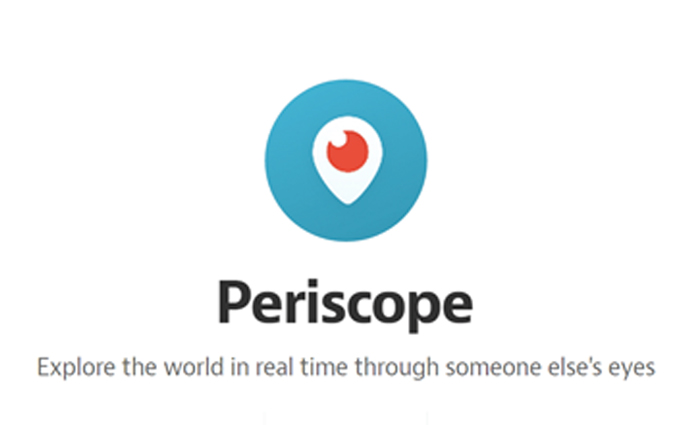7 Criteria for Designing an Effective Nonprofit Fundraising Event
There is a growing movement to do away with fundraising events for nonprofits. At this year’s International AFP conference, I heard this voiced several times, both as a desire by participants and a recommendation from session speakers. I disagree—with a few caveats.
Personally, I love fundraising events. I thrive on all of the details and careful planning that culminate into a magical occasion.
Professionally, I guide my clients to take on new events with great care. When done right, events have the capacity to raise significant funds for your nonprofit, while cultivating new and existing donors and volunteers, and creating a sense of community that simply isn’t possible with individual fundraising efforts. An exception to this rule would be house parties, but I would argue that these are also fundraising events. (If you want to debate this, please share an example in the comments. I would love to be proven wrong.)
But when executed poorly, events can be a resource drain that nets zero funds (or worse loses money), burn out your staff, volunteers, and board, and leave you on a never-ending cycle of fundraising.
So how do you design an effective event?
Use this list of 7 Criteria for Designing an Effective and Sustainable Fundraising Event to create an event that works for you, instead of against you.
1. Mission Alignment
Alignment with your mission is not optional. Any event for your nonprofit should not only reflect your mission and values but should bring them to life. The best events are a beautiful synergy between organizational purpose, guiding principles and fundraising, such as an organization that focuses on healthy and active living hosting a walk/run. At minimum, avoid anything in conflict with your mission or values—a substance abuse treatment program shouldn’t be hosting a brew fest.
To get the most out of your fundraising event, it’s critical to weave your mission throughout the attendee’s experience. A professional pet peeve of mine is the numerous walk/runs that forget to put the cause in the forefront. Having participated in many 5 and 10K charity runs, I can’t tell you how many times I’ve ended the run not knowing what organization or cause was benefitting from the event. On the flip side, the best participant education strategy I’ve seen used during a charity run was to place pictures of the clients every quarter mile, along with compelling statistics about the need.
During your planning process, take a mental walk through your event as a guest and consider all the points at which you have an opportunity to educate or simply keep your cause in your attendees’ minds.
2. Capitalize on Your Resources
Any event you create must be within your current resources or the resources you can develop in a short amount of time.
- Do you have current volunteers or access to an invested group of constituents such as parent groups, congregations, program volunteers, or clients with the ability and capacity to help, etc.?
- Do you have volunteers willing to take leadership roles in directing other volunteers, either in formal committees or informal groups?
- Do you have fundraising or other staff that can manage volunteers and/or do the heavy lifting?
- What tasks will you be taking your staff away from if their time is directed to the planning and coordination of an event?
- Do you have the capital for the initial event expenses? Event expenses can easily get away from you. To ensure a net gain to support your mission, it is essential to create a budget and stick to it as much as possible. Anyone in a position to spend money on the event (including volunteers) should know their budget and be held accountable for expenditures.
- Do you work with vendors, businesses or partners that may be willing to sponsor your event? What networks can you tap into for event sponsorships? Sponsorship development should always be viewed as a long-term strategy, one that takes significant investment of time and is aimed at creating a lasting and meaningful partnership. Win Win for the Greater Good by Bruce W. Burtch is a great resource for transformational partnerships.
- Do you have access to a free or reduced-price venue or other in-kind support that will keep your expenses down and net revenue up?
If you answered no to all or most of these questions, you don’t have the capacity to do an event. If you are convinced an event is the way you should go, start developing some of these resources and connections. Also consider how you can maximize the resources you have and shape your event around them. Designing your event to capitalize on your organization’s assets is key to making event fundraising manageable and sustainable.
3. Donor Appeal
Successful events require knowing your audience. What interests the donors that you have, or the donors you’d like to draw to your event? For example, if your donor demographic is more mature, the traditional gala, wine tasting, or luncheon may be the right fit. If you’re trying to appeal to millennials or gen Ys, you may need to be more creative and livelier. I’ve seen everything from ping pong contests to harvest festivals be a great success.
Is your event likely to draw new donors? How can you intentionally design it to bring in new people to your organization’s community? How can you access the right networks to make it successful? Examples include through your board, host committees, sponsors, table hosts, and mission-related professional networks. Once you are successful at getting new donors to your event, ensure the program or other mission elements of your event are engaging and leave a lasting positive impression.
4. Types of Events
There are so many types of events that it can feel overwhelming when you sit down to plan yours. I find that it helps my clients if we first consider them in large categories and then move on to choosing a specific event format. This also helps them consider fresh takes on events, such as switching their banquet from dinner to breakfast.
Banquet Style Events – Breakfasts, Luncheons, Dinners, Galas, Auctions, Award Ceremonies, Speaker Events
Community Events – Tournaments, Raffles, Craft or Bake Sales, Family Fun Fairs or Carnivals, Poker Runs, BBQs
Athletic Events – Walks, Runs, Cycling Events, Golf Tournaments, etc.
Art Events – Fashion Shows, Concerts, Theater Parties, Film Festivals, and Art Shows
More Intimate Events – House Parties, Wine Tastings, Dinner Parties, Site or Program Tours
What matters most is that the event format you choose is a good match for your donors, resources and mission.
5. Fundraising Capacity
Before you commit to an event, make a fundraising plan to ensure what you net (gross revenue minus expenses) will be worth all of the effort. Almost every event is going to have multiple sources of revenue, such as ticket sales, sponsorships, raffle, silent auction, program ads, donations in lieu of attending, and fund-a-need (direct ask for donations at the event). For fresh ideas around revenue enhancers, check out Greater Giving’s eBook, including my entry on Selective Raffles (page 58 of eBook). Think through all of your layers of fundraising, how much you can raise from each, and develop an achievable action plan to reach each of those goals. For example, if your goal is to secure$25,000 in sponsorships, you will need a healthy prospect list and the human resources to start working on that list at least 6 months in advance of the event. On the expense side, you’ll need to create an expense budget and stick to it. Get estimates from vendors whenever possible. You can also reach out to nonprofit colleagues for figures based on their similar events; most are willing to help a fellow fundraising professional with resources or information.
Lastly, consider if the fundraising capacity of the event will increase from year to year, building on the momentum you created at each event, or if the event structured for one-time participation.
6. Integration with Other Fundraising Activities
Fundraising events should never be a standalone fundraising activity. Instead, fundraising events should be part of a well-balanced fundraising strategy, serving specific purposes such as attracting new donors, creating a sense of community, or providing an important connection to your cause. When thinking about designing your event, consider how it can integrate into your other fundraising activities, particularly individual giving campaigns.
Part of the event planning should include how you will follow up with attendees after the event and communication strategies to bring them closer to your agency. Staff or board members should do a personal follow-up with new supporters, so build those steps into your plan and make certain everyone knows their roles ahead of time.
7. Event Sustainability
I have hinted at this already, but it deserves explicitly stating: part of designing the right event for your organization is considering how you will sustain the effort beyond the first year, the third year, the fifth year and so on. While energetic volunteers and staff can move mountains, eventually people burn out. Every year you should be bringing in new volunteers to support the event coordination, planning and execution, so make that part of your planning process.
In addition, event fundraising isn’t only about money raised on one day. Your event should be designed to build on each year’s efforts, and you should be developing lasting relationships with repeat donors, attendees, sponsors and volunteers. Aim for seamless integration into your other engagement activities.



